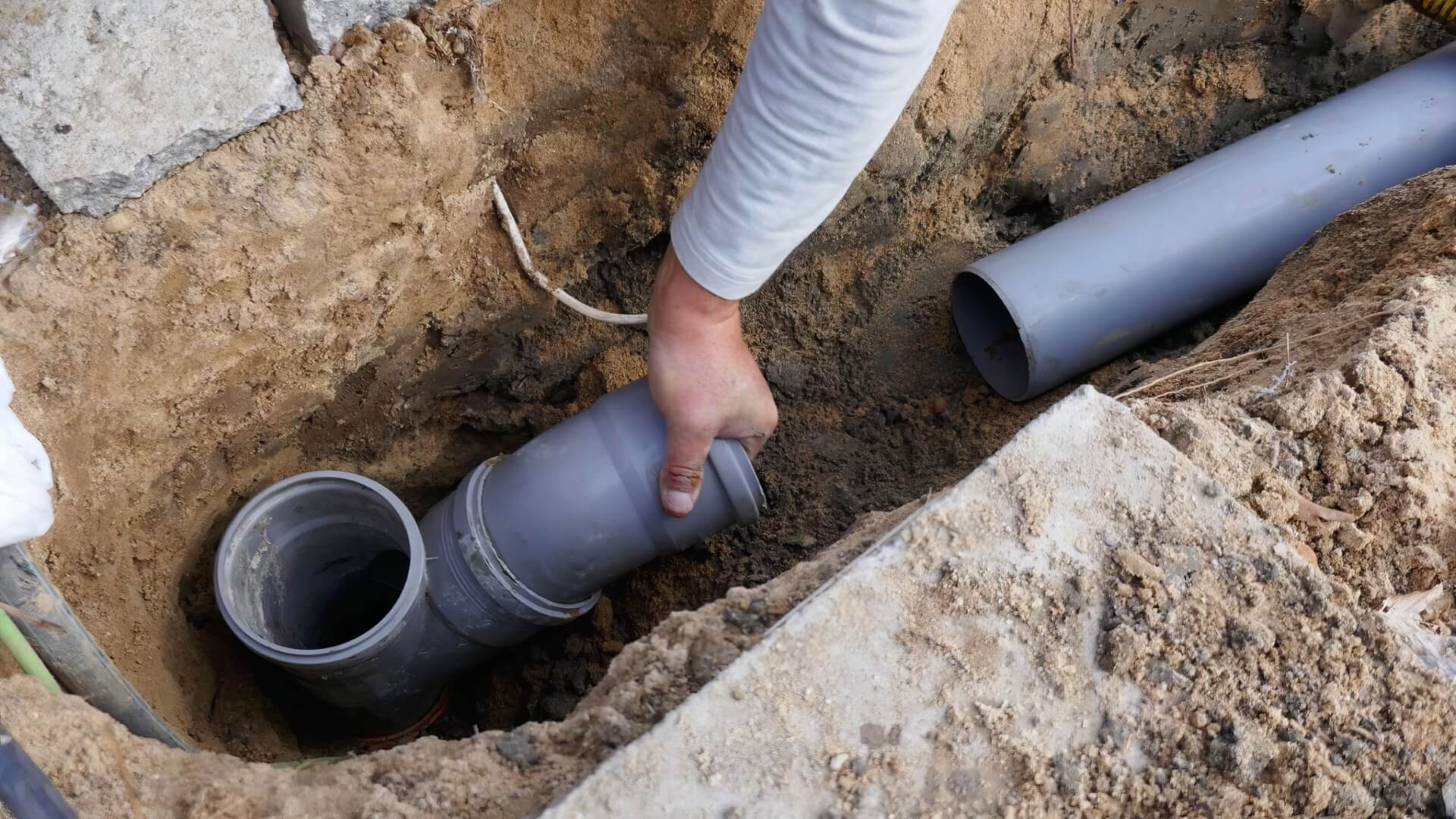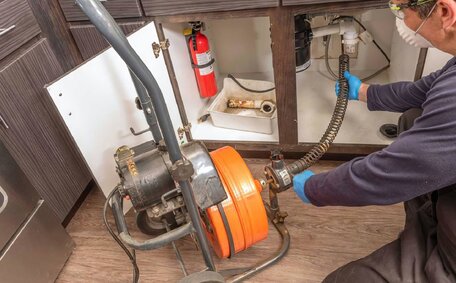What is Pipe Relining and Why is it Needed?
Pipe relining efficiently repairs damaged pipes from within, eliminating the need for excavation. It involves inserting an epoxy pipe lining into the existing pipe to seal cracks, repair corrosion damage caused, and prevent further deterioration.
There are several reasons why pipe relining may be needed in your home:
- Tree root intrusion - Roots seeking moisture can penetrate tiny cracks in pipes, leading to blockages and subsequent damage within your property.
- Ageing pipes - Old cast iron or clay pipes corrode and crack over time from gradual wear and tear.
- Ground shifting - Movement in the surrounding soil can stress your plumbing pipe, causing cracks and leaks.
- High water pressure - Consistent high water pressure can weaken pipes at joints and connections.
Additionally, pipe relining is often much less expensive and invasive than full pipe replacement. Only small access points are needed, guaranteeing that the integrity of your property is preserved during the process, to feed the flexible epoxy lining into place. With our team providing expert plumbing services, relined pipes are restored to full strength and flow capacity.
This method minimises disruption by avoiding the need to dig up landscaping or flooring to access sewer pipes.
In some cases, homeowners insurance cover may influence decisions when serious pipe damage necessitates replacement. For common pipe issues like age-related deterioration or damage from roots and ground movement, relining is a practical repair option with minimal disruption.
Typical Home Insurance Policy Inclusions and Exclusions for Plumbing
Homeowners insurance policies typically cover sewer repairs for immediate crises in your water system, like burst pipes or leaks causing tangible property damage. This situation typically comes under your standard policy for dwelling coverage, which often covers sewer related repairs resulting from water damage.
However, insurance typically does not cover leaks that lead to gradual water damage due to wear and tear or poor maintenance. For example, slow pipe corrosion that eventually leads to leaks would be excluded as would drain blockages from buildup over time.
Common inclusions under standard home insurance are:
- Burst water pipe incidents
- Leaking pipes
- Malfunctions in hot water systems
- Toilet/sink overflow damage
Common exclusions, which usually determine coverage for blocked drains, encompass:
- Leaking taps
- Dripping faucets
- Blocked drains scenarios
- Leaking flexi hose situations
- Sewer line repairs
- Pipe relining
In summary, homeowners insurance usually covers sudden water damage but not gradual deterioration or specific repairs like relining, which are the homeowner’s expense. Determining if your home insurance policy provides cover is crucial.
When Insurance Might Cover Pipe Relining
Insurance covers for pipe relining may apply in certain accidental damage scenarios like:
- A storm or flood causes damage with a significant impact on your plumbing system
- Nearby construction or digging unexpectedly impacts pipes
- Plumbing damage caused by a falling object, such as a tree branch
These circumstances symbolise sudden line damage occurrences that might be covered under a homeowners policy and could require an expert to carry out repairs. Each claim is assessed with a thorough review of what the homeowner’s insurance policy covers. Insurance is less likely to cover gradual damage.
Note that coverage for sewer/drain and water lines varies between insurance company policies. If you’re seeking insurance cover sewer relining due to root ingress or corrosion, expect coverage terms to vary. Stormwater/water line relining often has better chances of being covered.
You should review your home insurance policy with questions such as:
- Does your policy provide for events that may necessitate pipe relining?
- Does the policy cover sewer line and drain line repairs like relining?
- How do I understand the stormwater vs wastewater delineation?
Determining whether your insurance policy includes pipe relining can significantly affect the viability of a claim and potential out-of-pocket costs.
Getting Pipe Relining Approved by Your Insurance Provider
Gaining approval for your pipe relining from your insurance provider requires proactive preparation and communication.
Document all evidence of pipe damage, such as through photos, video and written details of the specific issue and how/when it occurred. Seek independent professional assessments and cost estimates from plumbers elucidating why pipe relining is superior to replacement. Plumbers can clarify how the pipe relining costs translate into effective relining solutions.
Provide this documentation to your insurer when filing a claim, specifying the relining cost aligns with your policy coverage for sudden and accidental events. Emphasise pipe relining being less invasive and expensive than replacement.
Having an assessor compile a report to validate the necessity and details of proposed relining can be beneficial. This expert testimony can strengthen the case for claiming line replacement approval.
Keep consistent communication with your insurer during the claim process. Seek written approval before formally committing to engagement of repair contractors. Understand claim limits and any excess payments required upfront as defined by your homeowner’s insurance.
With proof of damage, necessary repairs, and cost-effectiveness, supported by external reports, relining has a good chance of claim approval. A clear and ongoing dialogue with insurers about policy coverage and claim validity is essential.
Proactive Plumbing Maintenance to Prevent Issues
Regular plumbing maintenance can avert the escalation of minor issues into significant problems. It also reduces the likelihood and potential loss use due to expensive emergency repairs that may not be covered by insurance.
Homeowners should periodically inspect their plumbing and take action, considering whether insurance could provide coverage:
- Inspect water pipes, joints, valves, and fixtures for signs of gas leaks or damage to safeguard the structural soundness of your property. Address any problems found immediately before they worsen.
- Regularly flush drains and water pipes with water and baking soda to clear potential blockages.
- Trim back vegetation and tree roots that might damage your sewer line.
- Install protective pipe insulation in exposed areas vulnerable to weather or physical impacts.
- Maintain optimal levels in your water pressure to prevent undue stress on your plumbing system.
- Service your water heater units consistently to maintain optimal efficiency and prolong their lifespan.
Being vigilant with basic plumbing maintenance checks and servicing can prevent more serious issues we see arising. Make sure to adopt this proactive approach to reduce the likelihood of expensive emergency your pipe lining repair costs, some of which may not be reimbursed by insurance if deemed gradual wear and tear damage.
Identifying Early Signs of Pipe Damage Needing Relining
Homeowners should look out for the following signs that may indicate underlying pipe damage requiring relining:
- Reduced water flow from taps or showerheads, which could indicate an obstruction near your water meter
- Discoloured water with sediment, rust or abnormal odour pointing to broken pipes, corrosion and contamination
- New visible water leaks, moisture or damp spots around your pipes
- Heightened noise from pipes or drains like gurgling or rattling
- Frequent drain blockages, slowed drainage or gurgling drains
- Marks such as cracks or bulges along sections of exposed pipes
If such symptoms persist, consider consulting with a licensed plumber to conduct checks, which may be covered under your insurance in cases of severe damage. Check your insurance policy and seek evidence for a potential insurance claim towards repair costs cover cost if major deterioration problems are verified.
Catching damage early is key, as the issue could have been far less severe and cheaper to address. Increased deterioration over time heightens relining necessity but may move issues into qualifying as gradual damages, often excluded by insurers. So prompt consultation on coverage viability with your provider when warning signs first appear is advisable.
Working with Professionals for Assessments and Repairs
Plumbers, such as the team at Drummoyne Plumbing, possess the expert knowledge required to tackle pipe damage complications. Through their qualified assessments and pipe repair expertise, they ensure your service line operates smoothly and incorporates leak detection. Their comprehensive understanding of what your plumbing system policy covers enables them to provide accurate diagnoses and best practice solutions, such as pipe relining instead of full replacement when appropriate.
Our team at Drummoyne Plumbing has helped numerous homeowners navigate the complexities of insurance claims for underground pipe damage. They work closely with insurers to secure approvals through proper documenting of damage evidence, repair necessity and cost effectiveness. Customers highly recommend our team’s approach, reflecting the utmost professionalism, demonstrating operational excellence in repair work execution as well.
If pipe damage symptoms arise, we know you can trust Drummoyne Plumbing’s licenced professionals for thorough site assessments. Our team determines optimal solutions aligned to insurance policies, managing entire projects from approval to quality repairs.
Phone 1300 349 338 or email [email protected] to tap into Drummoyne’s expertise managing plumbing issues, claims and relining needs.






